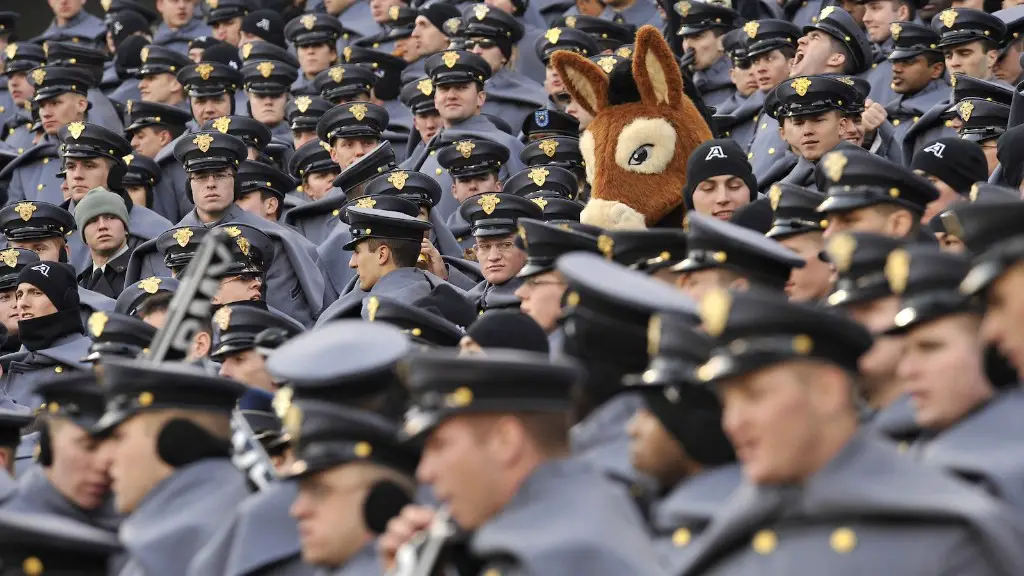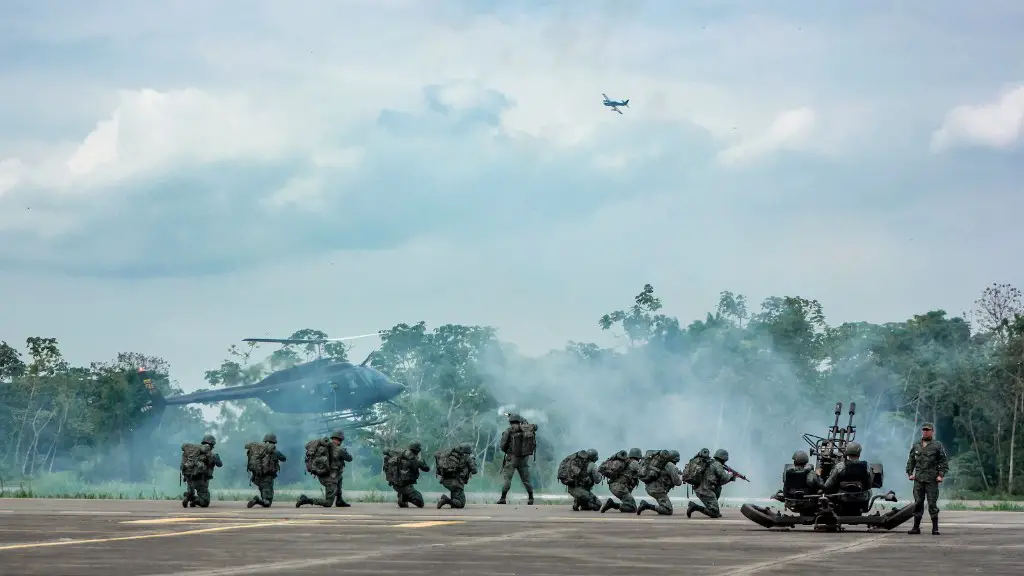The Size of the Chinese Army
The People’s Liberation Army (PLA) is the armed forces of China, and the world’s largest military force. With more than two million men and women in active service, the PLA is the world’s largest standing army, as well as the largest reserve force. The PLA was founded in 1927 and is divided into seven Military Regions – Beijing, Jinan, Nanjing, Guangzhou, Chengdu, Shenyang and Lanzhou.
The number of personnel in the PLA has increased significantly throughout the years. The estimates for the size of the PLA vary from 2.3 million to over 3 million. This number is difficult to estimate accurately, since the Chinese government does not publicly disclose military size data.
The PLA is known for its professionalism and discipline. The Chinese army has invested heavily in modern weapons and equipment and up-to-date training. Its forces are generally well-equipped and highly proficient in all aspects of tactical warfare, including counter-insurgency and guerrilla warfare.
The Chinese military has made use of technology to enhance combat effectiveness. This includes the use of drones, electronic warfare systems, advanced battlefield surveillance systems and network-centric warfare systems. The PLA is equipped with a large range of domestic and foreign weapons, including tanks, artillery, ships, airplanes, helicopters, guided missiles and cyber warfare capabilities.
The Chinese military is organized into five distinct branches: the Ground Force, Navy, Air Force, Rocket Force and Strategic Support Force. The Ground Force is the largest branch of the PLA and is responsible for ground operations, including offensive and defensive combat operations, reconnaissance and infiltration, maneuver warfare and mobile tactics. The Navy is the second largest branch, and is responsible for conducting operations at sea. The Air Force is the third largest branch of the PLA and is responsible for air combat operations, as well as logistics, command and communications. The Rocket Force is the fourth branch of the PLA, and is responsible for strategic nuclear, conventional and land-based missiles, as well as the development of other strategic ballistic and missile defense systems. The Strategic Support Force is the fifth and smallest branch of the PLA and is responsible for cyber warfare, electronic warfare, and logistics.
Development of the Chinese Army
The Chinese military has undergone major changes and reforms over the past few decades. The PLA has adopted a professional approach to training and is focused on modernizing its forces and weaponry. The Chinese military has put a lot of effort into the development of its air force, navy, and strategic weapons capabilities.
The PLA has increased spending on modern weapons and equipment, and has adopted a more rigorous approach to training. The Chinese military has also implemented new training methods and structures to ensure that their forces are capable of conducting modern warfare.
The Chinese military has also developed new doctrines in an effort to address new threats and challenges. These include a focus on joint operations, expeditionary operations, and asymmetric operations. This has resulted in the PLA becoming a more capable force that is capable of conducting operations in different regions and against different types of adversaries.
The Chinese military has increased its focus on strategic defense, as well as the development of strategic nuclear capabilities. The PLA has also made substantial investments in space-based and high-tech sensors, as well as electronic warfare systems.
One of the major changes that the PLA has made is the establishment of the Strategic Support Force. This branch is responsible for cyber warfare and electronic warfare operations, as well as the development of information and logistical support systems.
International Military Exercises
The People’s Liberation Army has undertaken several joint exercises with other militaries over the years. The PLA annually participates in the Peace Mission military exercise, which is held by the Shanghai Cooperation Organisation. The exercise involves troops from China, Russia, Kazakhstan, Kyrgyzstan, Tajikistan and Uzbekistan, and is aimed at improving coordination and cooperation between the militaries of the member states.
The PLA has also conducted joint exercises with other militaries, including the United States, the United Kingdom, and France. In addition, the PLA has conducted several other international joint exercises, such as the 2017 International Army Games, which had teams from more than 30 countries competing for a variety of awards.
Analysis and Forecasts
The Chinese military has made considerable progress in modernizing its forces and weaponry, and has increased its focus on joint operations and expeditionary operations. As the PLA continues to modernize, its capabilities will continue to increase.
The Chinese military’s focus on information operations, cyber warfare and electronic warfare, as well as its increasing investment in space-based and high-tech sensors, will enable the PLA to achieve its goals more effectively. Moreover, the increase in the number of joint exercises indicates that the Chinese military is increasingly becoming a more capable force.
The gradual development of the PLA’s capabilities will ensure that it remains one of the most powerful militaries in the world.
China’s Foreign and Domestic Military Posture
The People’s Liberation Army (PLA) has an active military presence both domestically and abroad, with a large number of military bases around the world, including in the South China Sea, and a considerable number of troops stationed in both Tibet and Xinjiang.
China is an important economic power, and the PLA is involved in a range of activities to ensure the stability and security of its interests. Domestically, this includes operations to combat separatism and terrorism, as well as providing security and stability in Tibet and Xinjiang. Internationally, the PLA is involved in a range of operations, including peacekeeping missions, counter-piracy missions, and joint exercises with other militaries.
The PLA’s presence abroad is growing, and its involvement in international security affairs has been increasing in recent years. China is now an increasingly active participant in efforts to address global security challenges, and is a member of several multilateral security initiatives, such as the Shanghai Cooperation Organisation and the ASEAN Regional Forum.
China is also a major contributor of military personnel and equipment to United Nations peacekeeping operations. The PLA has deployed personnel to several UN missions, including to Haiti, Mali, and South Sudan. The PLA currently has more than 2,500 personnel serving on UN missions.
The Future of the Chinese Army
The Chinese military is expected to continue to increase its presence domestically and abroad in the coming years. The PLA is equipped and trained for modern warfare, and is capable of projecting power far beyond its own borders.
The PLA is likely to continue to increase its investment in modern weapons and equipment, as well as in its training and operations capabilities. Its focus on information and cyber operations will enable it to have a more effective presence in the information age.
The increasing involvement of the PLA in international security affairs is likely to continue in the coming years. China is expected to become a more active participant in regional and international security initiatives, such as the Shanghai Cooperation Organisation and the ASEAN Regional Forum.
The Chinese military will also likely continue to increase its involvement in UN peacekeeping operations. The PLA is increasingly becoming a major contributor of military personnel and equipment to UN missions, and is expected to continue its mission of ensuring regional and international peace and stability in the years to come.
Economic Support for the Chinese Army
The Chinese government provides significant financial support for the People’s Liberation Army (PLA). This includes an annual defense budget that is the second largest in the world, amounting to around $200 billion in 2020.
The PLA is a major economic driver, and its activities in areas such as infrastructure, logistics, research and development, and international mercantile operations are an important source of revenue for the Chinese economy. In addition, the PLA’s involvement in international peacekeeping operations and other activities contributes to the Chinese government’s foreign exchange reserves.
The Chinese government is also investing heavily in modernizing the PLA’s forces and weaponry. This includes the development of advanced weapons, such as the new stealth fighter jets, as well as the deployment of space-based and high-tech sensors.
The Chinese government has also invested heavily in improving the training and operations capabilities of the PLA. This includes the establishment of modern training facilities, as well as the development of training programs to ensure that the PLA’s forces are proficient in the latest tactics and strategies.
The Chinese government is also providing financial support to the PLA’s presence abroad. This includes support for the deployment of personnel to UN missions, as well as the funding of joint exercises and other international activities.
Conclusion
The PLA has undergone major changes and reforms over the past few decades and is now one of the most professional and capable militaries in the world. The Chinese government is providing significant financial support for the PLA, and the PLA is increasingly becoming a more active participant in regional and international security initiatives. The PLA’s presence abroad is expected to grow in the coming years, and its involvement in international peacekeeping operations and other activities will contribute to the Chinese economy.


